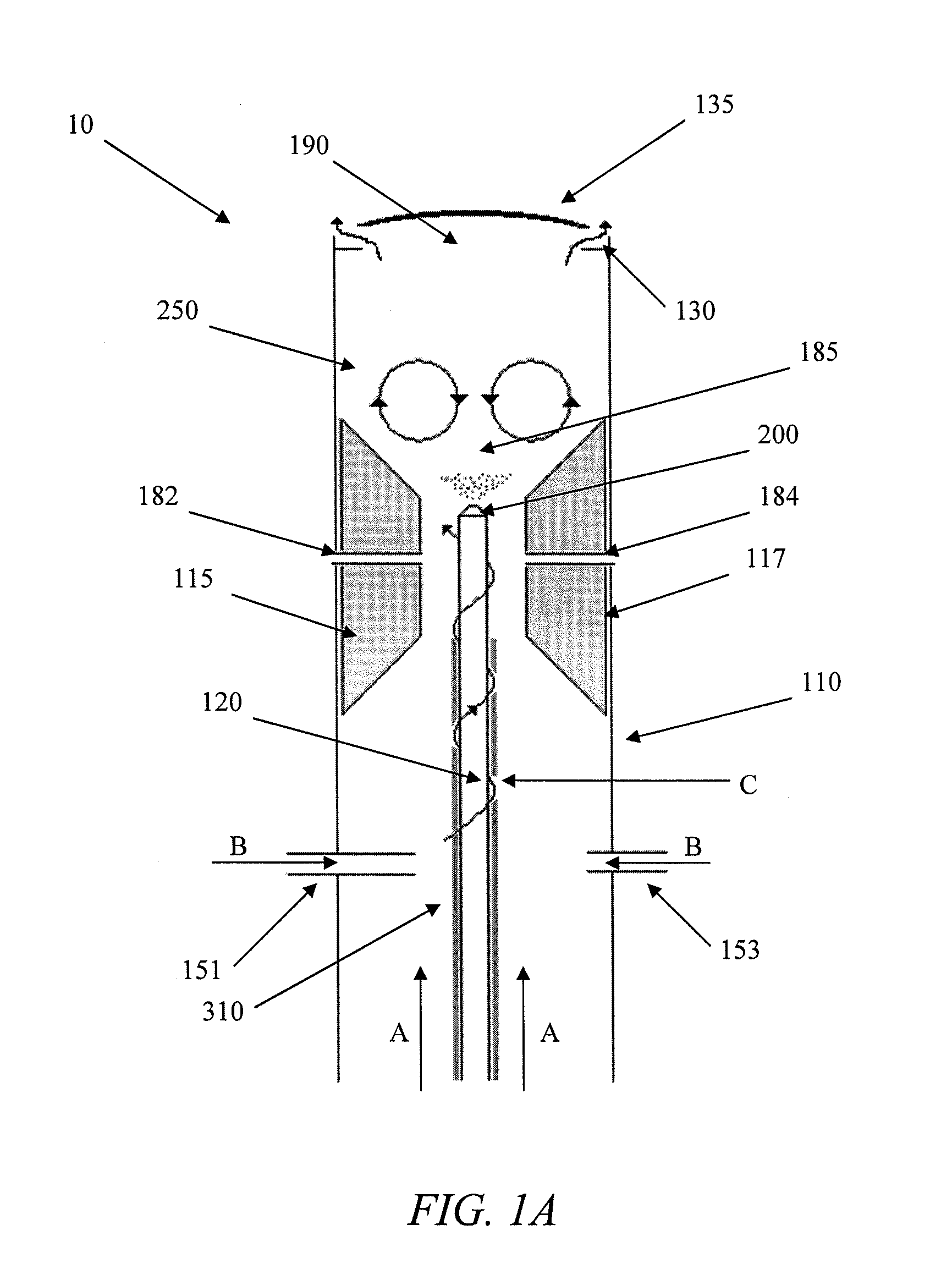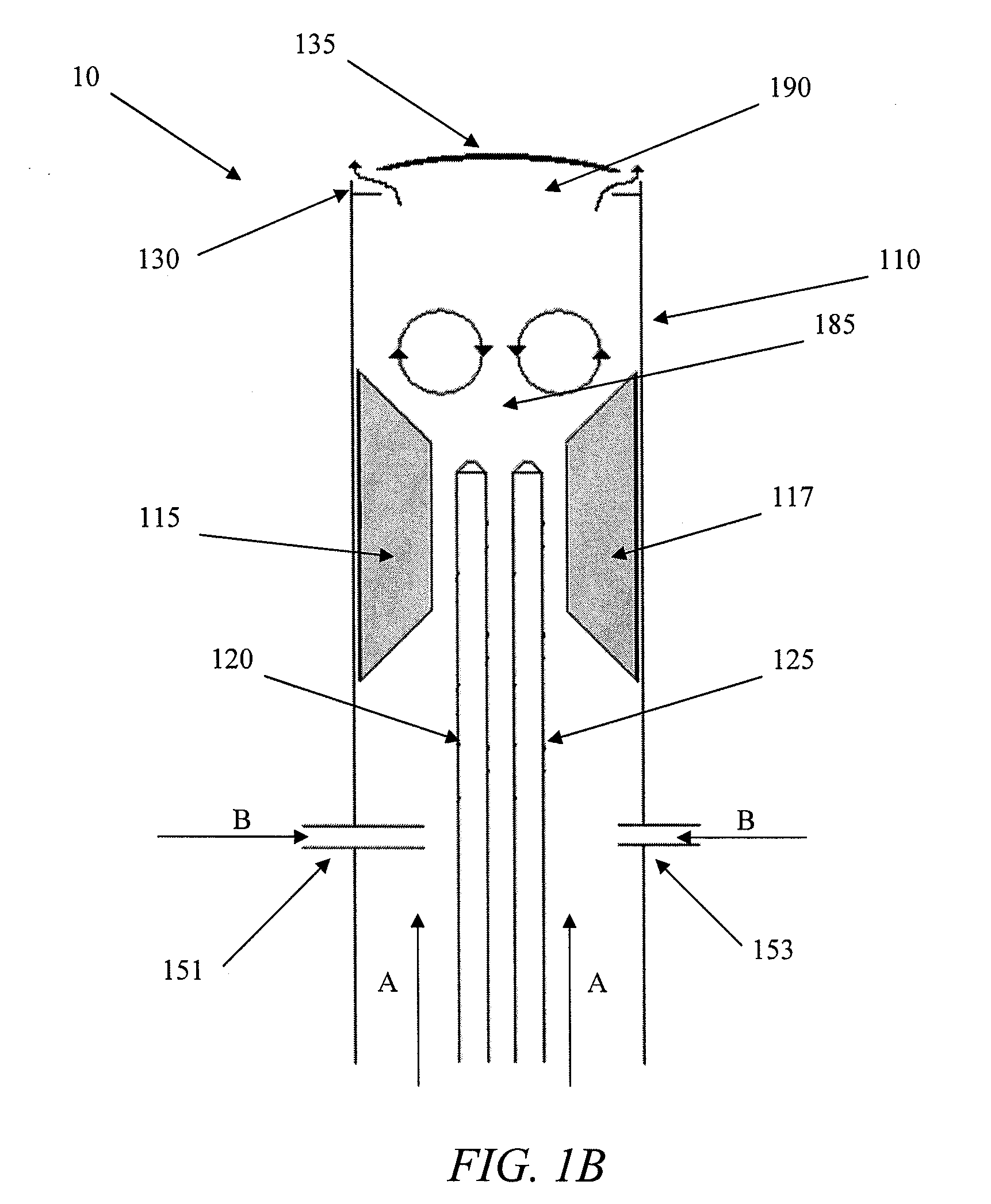Process for combustion of high viscosity low heating value liquid fuels
a liquid fuel, high viscosity technology, applied in the direction of non-combustible gases/liquids, biofeedstock, steam use, etc., can solve the problems of increasing global excess of crude glycerol, increasing the supply of crude glycerol, and not being in a pure form ready, etc., to achieve low heating value, high viscosity, and clean
- Summary
- Abstract
- Description
- Claims
- Application Information
AI Technical Summary
Benefits of technology
Problems solved by technology
Method used
Image
Examples
example 1
[0125]A combustion apparatus similar to that illustrated in FIG. 1A was used to achieve sustained combustion of glycerol. Initially, the combustion chamber of the apparatus was pre-heated using propane as a pre-heating fuel. The propane was provided with axial air flow at a rate of 30 standard liters per minute (SLPM) and tangential air flow at a rate of 150 SLPM creating a swirl number calculated to be 17.6 and a Reynolds number of 2,200. Propane flow was started at a rate of 15-20 SLPM and the fuel was ignited.
[0126]Air flow through the atomization nozzle was gradually increased from zero to 18 SLPM, avoiding providing an airflow that would extinguish the propane flame. The combustion chamber was heated with the propane flame until the top of the flame enclosure glowed bright red, indicating the temperature was between about 80° and about 1,000° C.
[0127]Glycerol was pumped through the atomization nozzle, beginning at a rate of about 1 gram per second, and the...
example 2
Emissions Testing
[0128]Emissions from glycerol combustion as described in Example 1 were collected and tested to determine concentrations of various emissions components. Presence of acrolein and other aldehydes was tested using DNPH (2,4-dinitrophenyl-hydrazine) cartridges and high performance liquid chromatography (HPLC). Test cartridges containing a porous plug of DNPH were purchased from a commercial vendor. In practice, exhaust from the glycerol combustion was collected and forced through the DNPH cartridge via low air pressure. Testing functioned that that any ketone or aldehyde compounds present in the exhaust reacted with the DNPH and were retained in the cartridge plug. The DNPH plug was eluted in acetonitrile, and the solution was subjected to HPLC analysis to quantify the mass of particular DNPH derivatives present. Aldehyde concentration was calculated using the mass measurement from the HPLC analysis compared with the volume of exhaust gas that was originally pulled thr...
PUM
 Login to View More
Login to View More Abstract
Description
Claims
Application Information
 Login to View More
Login to View More - R&D
- Intellectual Property
- Life Sciences
- Materials
- Tech Scout
- Unparalleled Data Quality
- Higher Quality Content
- 60% Fewer Hallucinations
Browse by: Latest US Patents, China's latest patents, Technical Efficacy Thesaurus, Application Domain, Technology Topic, Popular Technical Reports.
© 2025 PatSnap. All rights reserved.Legal|Privacy policy|Modern Slavery Act Transparency Statement|Sitemap|About US| Contact US: help@patsnap.com



